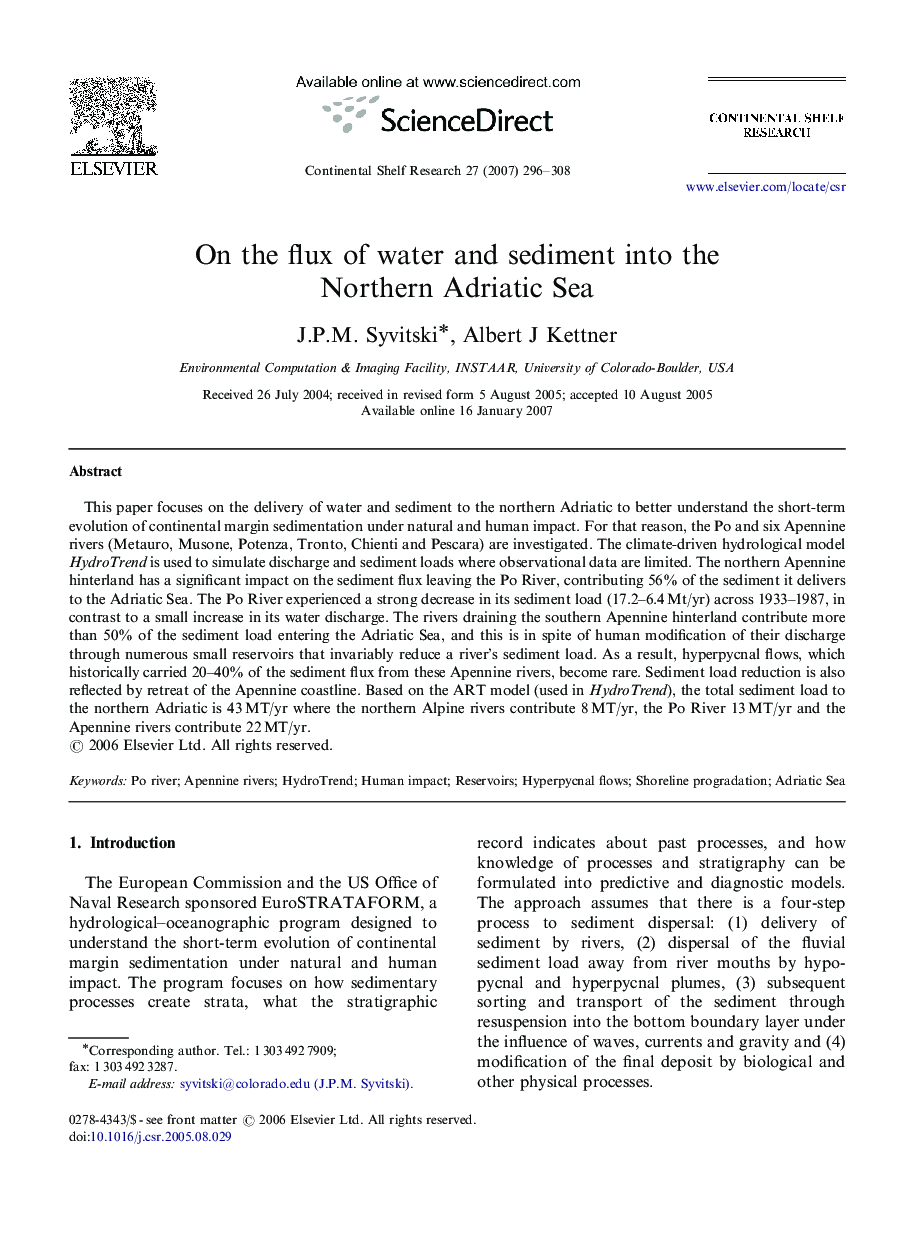| Article ID | Journal | Published Year | Pages | File Type |
|---|---|---|---|---|
| 4533987 | Continental Shelf Research | 2007 | 13 Pages |
This paper focuses on the delivery of water and sediment to the northern Adriatic to better understand the short-term evolution of continental margin sedimentation under natural and human impact. For that reason, the Po and six Apennine rivers (Metauro, Musone, Potenza, Tronto, Chienti and Pescara) are investigated. The climate-driven hydrological model HydroTrend is used to simulate discharge and sediment loads where observational data are limited. The northern Apennine hinterland has a significant impact on the sediment flux leaving the Po River, contributing 56% of the sediment it delivers to the Adriatic Sea. The Po River experienced a strong decrease in its sediment load (17.2–6.4 Mt/yr) across 1933–1987, in contrast to a small increase in its water discharge. The rivers draining the southern Apennine hinterland contribute more than 50% of the sediment load entering the Adriatic Sea, and this is in spite of human modification of their discharge through numerous small reservoirs that invariably reduce a river's sediment load. As a result, hyperpycnal flows, which historically carried 20–40% of the sediment flux from these Apennine rivers, become rare. Sediment load reduction is also reflected by retreat of the Apennine coastline. Based on the ART model (used in HydroTrend), the total sediment load to the northern Adriatic is 43 MT/yr where the northern Alpine rivers contribute 8 MT/yr, the Po River 13 MT/yr and the Apennine rivers contribute 22 MT/yr.
